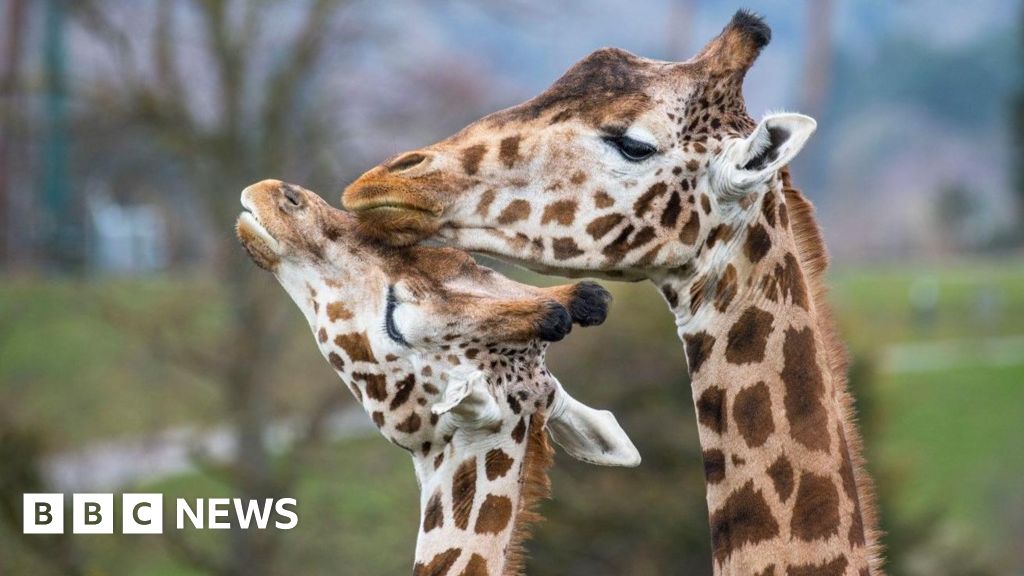
Preventing lemurs escaping via an icy lake and ensuring giraffes stay at a safe temperature – it's never a dull day at West Midlands Safari Park, even in winter.
The attraction will be closed for much of January, but behind the scenes the "workload is harder", say staff.
Ice needs clearing, animals receive extra bedding on the colder ground and with them using a "lot more energy in cold weather, you have to adjust diets".
"I've spent many hours breaking ice off water troughs," said head keeper of ungulates Lisa Watkins, of the metal squares where the residents seek out a drink.
"We don't leave without the animals having water. It's a big task… we have to sacrifice other things."
If the lake within the lemur area freezes solid, staff must get sticks around the edges to break it up, otherwise that could be a potential escape route.
Using probably three of four people, it could take about an hour depending on how thick the ice was, Miss Watkins said.
She reflected it had been a "tough year" with the cost-of-living crisis and poor weather.
The attraction in Bewdley, Worcestershire, still welcomed 715,000 visitors between October 2023 and September this year and had tried to remain competitive with 35% discounts when people book online.
The safari park has about 700 animals overall.
In the winter "everything is about preparation," Miss Watkins said, with workers ensuring heating systems are maintained before bad weather arrives.
Animals produce "more mess for us to clean," as they make more use of overnight housing and shelters that are visible on the drive-through safari.
Workers must keep giraffes, who are "built to lose heat," at between 18 and 20 degrees Celsius, so if one was out too long, staff try to coax them back in to their specially-heated home using branches.
But preparation starts well before the nights draw in. When leaves are on the trees in the summer, keepers chop them into airtight containers, so they can be winter giraffe food.
One beneficiary has been Strider, the oldest giraffe aged 21, although these residents cannot go out, if the ground is slippery.
Ms Watkins said: "If a giraffe breaks a leg, you can't repair it… They're more prone to injury."
The marmosets, small monkeys, would really struggle, if they were put out in the cold, the senior keeper said.
Also, if plenty of snow arrives, keepers must attend to paths for penguins used to a hot climate in South America.
Some on the park's register, however, can cope better than others with colder temperatures, such as camels accustomed to be in deserts where it can be minus 40 degrees.
Red pandas who come from the Himalayas were "in their element, the colder the better," while sea lions had "four inches of blubber," Miss Watkins pointed out.
The summer has other commitments, such as more patrols by keepers, so that visitors and animals are safe, but in the winter, with fewer staff, it is a different challenge.
Miss Watkins said: "We have to defrost padlocks. You have to defrost to get anywhere."
Follow BBC Hereford & Worcester on BBC Sounds, Facebook, X and Instagram.
Copyright 2024 BBC. All rights reserved. The BBC is not responsible for the content of external sites. Read about our approach to external linking.
